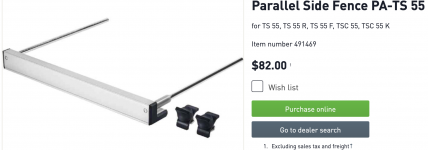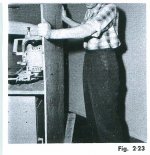I've long considered getting a track saw, but a recent table saw injury has moved this to a much higher priority. I recently sliced off 12 mm from my left index finger. All my fault, of course. Mainly, I lost focus on the task at hand and was already thinking of my next step.
And yes, thanks, I'm healing well and the track saw is totally undamaged.
Now, I know all spinning sharp metal tools have risks. Maybe I'm just telling myself a story, but it sure seems to me track saws are inherently safer. Not a full table saw replacement of course, but from what I'm seeing I think I can do nearly everything I need to with a track saw.
So. What I'm particularly interested in is your opinions wrt to safety. And has anyone actually been injured using a track saw? The internets are lousy with sometimes gruesome table saw injuries but so far I've not seen a single track saw injury.
Thanks for your thoughts!
And yes, thanks, I'm healing well and the track saw is totally undamaged.
Now, I know all spinning sharp metal tools have risks. Maybe I'm just telling myself a story, but it sure seems to me track saws are inherently safer. Not a full table saw replacement of course, but from what I'm seeing I think I can do nearly everything I need to with a track saw.
So. What I'm particularly interested in is your opinions wrt to safety. And has anyone actually been injured using a track saw? The internets are lousy with sometimes gruesome table saw injuries but so far I've not seen a single track saw injury.
Thanks for your thoughts!


